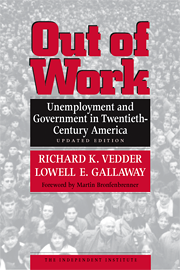The modern university began in the Middle Ages, and there are still some similarities between contemporary American universities and the manorial economy of a millennium ago. For example, on medieval manors under the three-field system, typically about one-third of the land remained fallow to prevent excessive depletion of the soil. Similarly, in academia, the main productive input (the faculty) often lies fallow three-four months a year, possibly to prevent excessive depletion of their brainpower.
This brings us to recent data from the Association of American University Professors (AAUP). Topping the modern academic fiefdom is the lord of the manor, the university president. He or she typically has a fair amount of power and on average receives, according to the AAUP, nearly five times the compensation of the academic “knights,” namely full-time professors (there are a few powerful overlords, football, and basketball coaches, who make even more than university presidents). Tenured full professors are the most powerful knights, usually having good salaries and often a fair amount of influence. But salaries vary enormously. The average full professor at Harvard (there are nearly 1,000 of them) makes $245,800 a year—with fringe benefits included, nearly $300,000. By contrast, at a fairly typical good quality state university, Ohio State, full professors on the main Columbus campus average $150,000 in salary (38% less than at Harvard), but at the Mansfield branch campus a relatively paltry $94,500.
Then there are the “yeomen,” academic farmers if you will, typically assistant professors on tenure track, who have a little clout (they typically vote in faculty meetings, for example), a possibility of some permanent job security, fairly good working conditions (midsize teaching loads, usually a small but private office, nearby parking), and decent but not spectacular compensation. An assistant professor typically makes somewhere between $60,000 and $90,000 annually, but there are important exceptions to that in both directions. Many earn additional funds from research grants, consulting, summer teaching, and writing and speaking fees.
Finally, there are the academic “serfs,” adjunct and part-time faculty, and graduate teaching assistants. They have high teaching loads, low pay (often less than $50,000 a year), little or no office space, absolutely no say in campus affairs, nearly zero job security, and they park far away from where they teach. They are truly an academic underclass.
Four observations: First, over time, in many fields, the supply of graduate students seeking tenure-track faculty positions has grown faster than the demand. In some disciplines, prospective assistant professors are figuratively a dime a dozen. Therefore, over time the power and economic status of both the tenured and non-tenured faculty has declined relative to that of the president and his rapidly growing number of administrative minions. As the demand for university education has weakened, institutions are facing greater financial pressures and substituting adjunct faculty costing $50,000 a year for tenure-track faculty costing, with fringe benefits, at least twice that much makes great sense. The proportion of tenured faculty has steadily fallen as a consequence.
Second, the old expression “publish or perish” has much validity. At research-oriented doctoral-granting institutions, salaries are much higher than at teaching-oriented schools offering just bachelor’s degrees. It is possible that teaching quality, not just research output, is higher at the research-oriented institutions, but no one seriously contends that high pay at top schools is mainly justified on teaching criteria. Moreover, some duties that are hard to measure, such as informal faculty mentoring of students on navigating the journey from childhood to productive adulthood, are often not adequately taken into account in rewarding faculty.
Third, the salary gap between the research-oriented elite schools and the less selective admission institutions has grown considerably over time. Publish or perish has become more the guiding maxim for professorial success over time.
Fourth, and related to the first point, other data indicate universities are increasingly devoting resources to things unrelated to learning or research. Typically, faculty salaries make up well under one-third total university spending, way down from 50 or 80 years ago.
All of this raises questions. Is the differential financial reward for research really optimal? Are the lords of the academic manor becoming so highly paid that it engenders public distrust and disgust with higher education? Is tenure really needed? Is the erosion in the faculty’s share of resources and decision-making clout something good or bad? All things to talk about in future epistles.













